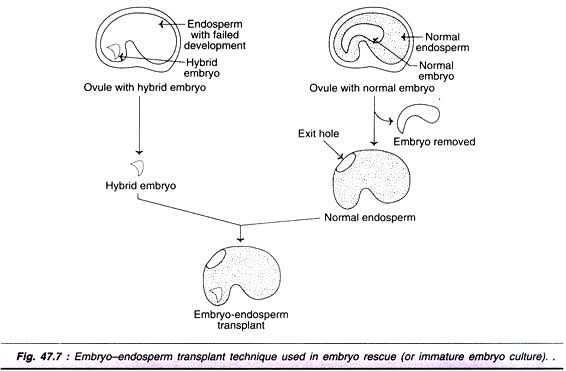Embryo culture
- Embryo culture means excision of embryos regardless of age, size and developmental stage from their natural environment and growing them under artificial environmental conditions.

TYPES OF EMBRYO CULTURE
A. Mature embryo culture:
- It is culture of mature embryo derived from ripe seeds. It requires simple medium.
- Some species produce sterile seeds which may be due to incomplete embryo development.
- Such embryos can be cultured and viable seedlings can be produced. Eg: Iris, orchids.
- This is done when embryos
a) Do not survive in vitro
b) Become dormant for longer periods of time
c) To eliminate the inhibition of seed germination
B. Immature embryo culture (or) embryo rescue technique:
- Culture of immature embryos to rescue the embryos of wild crosses is use d to avoid embryo abortion and produce viable plants.
- It requires complex media which includes special amino acids, hormones, endosperm extract like coconut milk etc.
APPLICATION
- Recovery of distant hybrids by preventing embryo abortion
- Recovery of haploid plants from inter specific and inter generic crosses
- Production of monoploids
- Shortening the breeding cycle
- Overcoming dormancy
- Propagation of orchids
- Embryo rescue from incompatible crosses to synthesis hybrids
- Overcoming seed sterility
- Clonal propagation